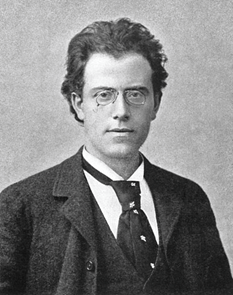You are here
Mahler's Monumental First Symphony
Gustav Mahler (1860–1911) wrote his ambitious first symphony while he was a conductor of the Leipzig Opera in Germany in 1888. On the piece’s first page, Mahler wrote wie ein naturlaut, which loosely translates to “as if spoken by nature.”
Right from the start, Mahler’s first symphony is new and spellbinding. The opening multi-octave A played by the strings creates an otherworldly feel. If you listen closely, you may recognize some of the first notes played by the winds, which are similar to the introduction music to the famous Gene Rodenberry series Star Trek.
In the first two movements, Mahler includes themes from Songs of a Wayfarer, songs he composed just a few years before Symphony No. 1. One of these wayfarer songs—ging heut morgen über’s feld—stays true to Mahler’s idea of music spoken by nature. It translates to, “this morning I walked across the field.” Hear for yourself as the ESO captures Mahler’s rejoicing of nature!
The nature theme continues in the third movement but as a funeral march. This isn’t just any funeral march! The movement is inspired by an old Austrian folk story called The Hunter’s Funeral. In the story, a funeral is held by animals of the forest for a dead hunter as they carry his coffin to the grave. Mahler even includes a nursery rhyme that you’ll surely know. See if you can hear the ESO play Frère Jacques (or Brother John in English) in this very unique third movement.
The finale starts with “the outcry of a wounded heart” in the opening measures. There is a real struggle to overcome darkness in this movement. The battle to defeat this darkness is heard across the orchestra. Just when it appears that the battle is won, a resurgence of what Mahler called “stormy emotion” in this movement resurfaces. Mahler summons a victorious and heroic ending that has the ESO’s wonderful brass section standing as they play the theme “and he shall reign” in a moment of pure jubilation.
